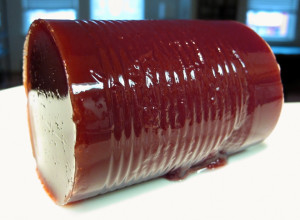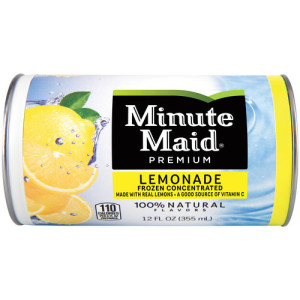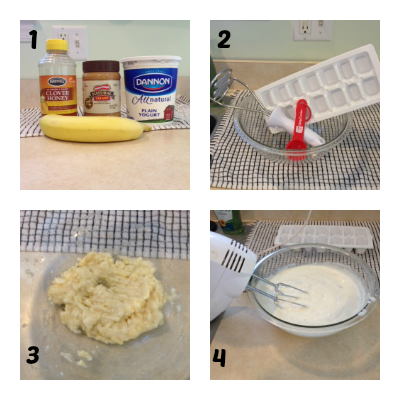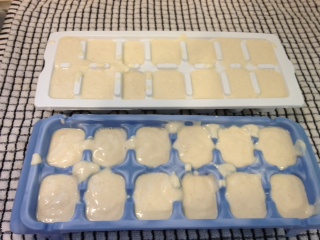If you’ve ever read a Little House on the Prairie book, then you know how much (especially in the earlier books) of them are devoted to describing food. Everything from recipes to what they gardened to how they used animal organs as toys is covered. And one of the most descriptive parts is when Laura discusses how they stocked their pantry for the winter.
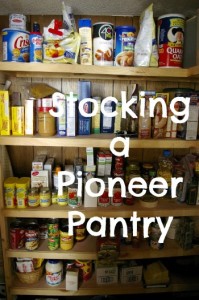
It’s pretty amazing how much food they were able to stuff into that small house. I mean, I suppose they had to if they didn’t want to starve to death, but given the fact that Laura’s description of her home implies that her family’s entire house could fit in my living room, the volume is impressive. Pretty widely varied, too, with their meat and fruit and vegetables and grains. (Although the variety puzzles me because it didn’t really seem like they cared much about mixing it up back then. Survival was important. Eating something different every day was not.)
So, like all good books do, the discussion of creating their stores for the winter got me thinking. Specifically about what my own pantry looks like. As in, what are the staples I need so that I could feed my family for a substantial time without having to go to the grocery store (this also prompted me to start thinking about what we’re going to plant in our garden but we’ll cover that another day) in the event that we are stuck or short on money or we decide to do a pantry challenge.
In other words, I asked myself this question–what do I need do have on hand in my pantry to make us more self-sufficient both in the long run and to prepare for any short term problems?
I started to assemble my list. I based my staples list not only price but on shelf life and stability (in case we lose power), usefulness in numerous recipes, likelihood of being eaten, nutrition content, and taste. I’m not stocking my pantry with vile tasting foods and spices just because they’re inexpensive, last a long time, and can be used in several recipes (yes, oregano, I’m looking at you. I don’t care what you say. You’re disgusting and you ruin food). I also used a number of my family’s favorite recipes as a guide because I want to stock my pantry in a way that will not only provide my family with food, but food that they enjoy (as much as possible).
Having said all of that, here’s the list:
- Flour–whole wheat and all purpose white
- Baking soda and baking power
- Yeast
- Peanut butter
- Oatmeal
- Pasta and rice
- Canned tomatoes
- Beans–dried and canned
- Potatoes
- Honey
- White and brown sugar
- Tea bags
- Spices–salt, pepper, chili powder, garlic powder, onion powder, cumin, crushed red pepper, Old Bay, cinnamon sugar, Italian seasoning
- Raisins
- Olive oil and vegetable oil
- Chicken and vegetable broth
- Chocolate chips
- Vinegar–white and apple cider
- Canned fruits and vegetables
Added to that list is fresh fruits and vegetables that do not require refrigeration (apples, tomatoes, bananas, etc). I wish I could add milk, butter, and eggs but I’m sure that there are shelf-stable substitutions for the refrigerated stuff that I can investigate.
I’m pretty sure with those ingredients in my pantry, my family could eat for at least an entire week without having to set foot in a grocery store or farmer’s market. And, lucky for us, in the event we lose power, we have a wood burning fireplace and a barbecue that we can use to cook. That’s nice and reassuring. (We’ll discuss methods to make your home more pioneer friendly/energy efficient without major construction or spending a fortune in an upcoming post)
Let me also add this. I am lucky that I have a home with a pantry large enough to accommodate this kind of stockpile and I can plan my list accordingly. If you live in a small home, or a large home with small storage, you might not be able to have as large of a stockpile. That is totally fine. To create yours, look at the space you have, assess what will fit, and make the necessary adjustments. Maybe instead of canned beans, you buy bags of dried beans and stack them on top of each other (they take up less room). Maybe you pour your sugar (note: it’s okay to sing Def Leppard along with that phrase. I did) into gallon sized plastic bags and then stack those on top of each other. You can do that with flour, too. Or perhaps you buy a large storage bin and put everything in there and then put the whole bin in a closet or under your bed, saving your pantry for your every day, non-emergency stuff. Or maybe you cover the bin with an old sheet you turned into a tablecloth and use it as a coffee table.
That last one might be stretching things a bit too far but it sounds like something a pioneer family would do.
Anyway.
It’s really up to you how creative you want to be based on space, time, and money as well as your family’s needs and dietary preferences. But this is one small task that anyone, no matter the size of your home, can complete to take one step closer towards feeling like a pioneer.
What does your pioneer pantry look like?

